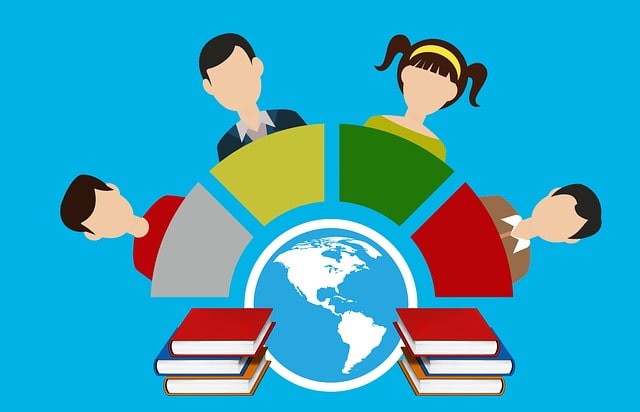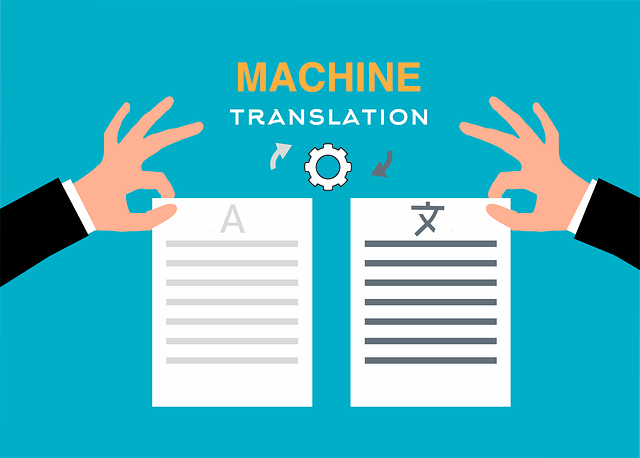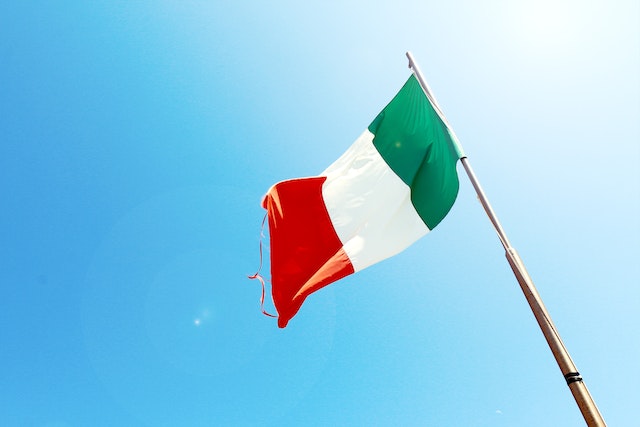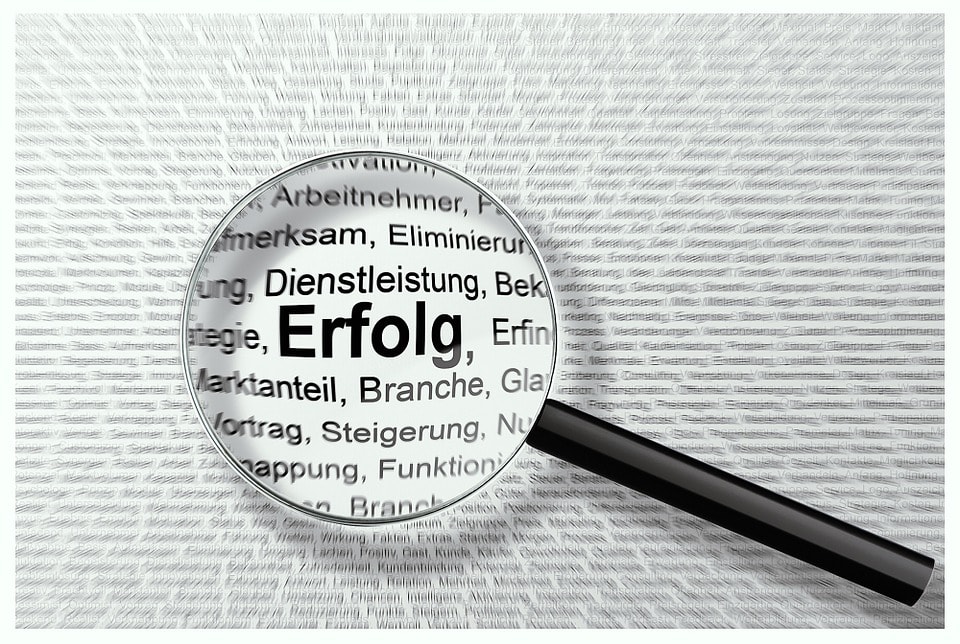Localization 101: Your Guide to the Basics

Localization is something you’ve probably considered if your brand has or plans to have international or multilingual customers. But what exactly is it, how is it different from translation, and how does it benefit you?
This guide will tell you everything you need to know.
What is localization?
Localization is the process of taking a piece of content and adapting its entire meaning for a new region. This includes translation and/or transcreation, any associated images, and other cultural elements that influence users’ perception of your content.
It also includes the omission of information from content that isn’t relative to a locale. Likewise, it could include the action of adding content. In Germany, as a for instance, every business needs to have an “Impressum” page which is usually found on the footer of a company’s website. Other countries may have their own requirements.
Localization makes a product or service look like it has been developed locally shaped by the local culture and/or laws. You’ve probably come across localized products or services without even realizing it. In fact, well done localization is meant to feel so natural that you only notice when it’s missing.
To compare, let’s say you’d like to buy a new gym bag online from an international brand.
No localization: You open the brand’s site and toggle the language to “English”. The text changes, but nothing else does. The menus and tabs are not where you’re used to them being, the product names don’t make sense, and the currency is foreign. The photos show people from a foreign country doing exercises you don’t recognize, in a gym that looks nothing like the ones where you live.
Localization: Now you visit a different international brand’s site. This time, as you switch the language, much more than just the text changes. The menus and buttons shift to where you’d look for them, the product names are recognizable, and the items reflect your local currency, with accurate shipping and import estimates. The photos look like they could have been taken at your local gym.
When you consider the vastly different user experience of these two brands (and which one you’d ultimately buy from), you’ll start to understand why localization matters.
Localization meaning in translation
You might be wondering, “Do I need localization for my brand, or is translation enough?” And what about other concepts like globalization, internationalization, and transcreation?
Let’s break it down and look at the differences.
Localization vs translation
Translation is simply the process of converting text from one language into another one. Localization includes translation, but goes far beyond it too.
It also includes:
- Vocabulary, grammatical, and spelling differences within the same language: localization (American English) and localisation (British English).
- Product names: Apple Pie (American English), Apple Crumble (British English) and empanada de manzana (European Spanish).
- Local currencies, time zones, and units: American dollars, British pounds, and Euros.
- Formats of date, time, measurement, address, and number formats: January 1, 1999 (American English) versus 1 January 1999 (British English).
- The tone and style of the message: for example, what level of formality is expected.
- Graphics and design: size, content, and style of images and visual elements.
- Color: some colors have different significance in different countries.
- User interface: where your audience expects to find menus, buttons, and links and what direction text is read in (right-to-left, left-to-right, or vertical).
- Cultural references: Jimmy Fallon and Andreu Buenafuente.
- Local customs and holidays: Independence Day and Fiesta Nacional de España, or having lunch at noon versus 2 or 3 P.M.
- Local political and social norms: gender roles, political parties, etc.
- Local regulations and legal requirements.
- Payment methods and shipping partners.
As such, there are many obvious localization advantages compared to translation.
Localization vs internationalization
Internationalization may sound like the opposite of localization. In reality, the two work hand in hand.
Internalization is the process of making a product or service ready for localization, removing anything that acts as a barrier to global development. Therefore, you first need to internationalize a brand before you can localize it.
Internationalization includes:
- Hardware support: users in different countries may use different devices (phones vs desktop computers, different browsers or operating systems, or even different plugs for charging electronics). You’ll need to optimize your website or app to work on a range of devices and programs.
- Customer service: adjusting business hours to be flexible among different time zones so customers from different time zones can reach you.
- User interface: making sure the user interface supports multiple languages in different formats like right-to-left, left-to-right and vertical. Also, that it has enough space to accommodate translations that could end up being longer than the original text.
- Data encoding: some languages require specific coding to support displaying the characters.
- Legal requirements: making the backend flexible to adhere to legal requirements in different countries.
Localization vs globalization
Globalization is a synonym for internationalization. See “localization vs internationalization” above.
Localization vs transcreation
As we’ve already seen, translation converts text from one language into another. Localization adapts both the text and all its surrounding context to feel natural to the target user. Both of these focus on adapting existing content — but transcreation goes one level higher.
It includes the creation of brand new content that is merely inspired by the original. It evokes the same emotional response in the target audience, but that may be the only thing that remains the same.
As an example, let’s say you have a campaign that makes a comparison with the Super Bowl to evoke the feeling of excitement. Translation would convert “Super Bowl” into Spanish. Localization would change it to “World Cup,” which is the equivalent in popularity in Spain. Transcreation would build a brand new, Spain-specific campaign around the feeling of excitement.
This can be very useful and effective for certain campaigns and high-stakes things, but could be unnecessary for other pieces of content such as blog posts.
Term abbreviations
Localization and its related terms can be quite a mouthful. For this reason, the language and translation community has come up with shorter abbreviations, using numbers to represent the number of letters between the first and the last ones.
Here are relevant short forms you might come across:
- L10N: localization (10 representing the 10 letters between the first L and the last N)
- T9N: translation
- I18N: internationalization
- G11N: globalization
Localization examples
What does localization look like in the real world? Here are 3 examples of localization:
1. Coca-Cola’s “Share a Coke” campaign
Coca-Cola had a localized “Share a Coke” campaign to create a more personal relationship with customers and inspire shared moments of happiness.
In the US, the bottles read “Share a Coke with” followed by common names such as Sarah, Kylie, or Tom. In Ireland, they localized to Irish names like Aoife and Oisín. In China, they used “classmate” or “close friend” instead of names as it’s impolite to address people by their first names.
2. ASOS’s buying platform
ASOS is a great example of a perfectly localized eCommerce platform.
The website is not only fully translated into 7 major languages, but also offers 10 different payment methods in 19 different currencies and a large partner network of international carriers for shipping. It automatically selects the appropriate settings for each visitor based on their location.
3. Apple’s “Get a Mac” video ad campaign
Apple’s international “Get a Mac” campaign in 2006-2009 is another good example of localization.
This is a series of video ads with a formally dressed man representing a Microsoft PC and a casually dressed man representing an Apple Macintosh. The videos each humorously compared the two computers, highlighting Microsoft’s weaknesses and the corresponding strengths of Macs.
This tactic was successful in the North American market, but Jobs knew they would not have the same effect in Japan where it’s frowned upon to belittle other people or companies. Thus, Apple localized these ads by hiring two Japanese comedians depicting the PC as the best fit for formal settings, and Macs for people who wanted to have fun.
Benefits of localization
Localization is important because it offers much more precise language and cultural adaptation than just translation. But why would you want this for your brand?
Here are the top 5 benefits of localization:
1. Enter new markets more easily
There are countless examples of companies that tried to enter a new market and ran into unexpected legal issues, accidentally caused offense, or just failed to make a dent. Localization protects you from these issues with proper research and brand adaptation.
2. Expand your customer base
When you successfully enter new markets, you open up your brand to a much wider customer base. Even if you don’t offer your products or services internationally, you’ll be able to connect with the minority languages and cultures within your brand’s area.
3. Build brand trust and loyalty
Localization makes your audience feel like your products or services speak directly to them. As a result, customers are better able to connect and engage with your brand. You’ll build likeability and avoid any cultural blunders that would make customers turn to the competition.
4. Get an edge over your competition
Looking back at the example in the very first section above, which of the two gym bag companies would you end up buying from? Localization is a great tool to set yourself apart in a highly competitive industry.
5. Increase your sales
A 2020 Common Sense Advisory report showed that 76% of consumers are more likely to purchase goods and services if they can read the information in their native language. This could be done with just translation. So imagine the impact of the seamless user experience you can provide your customers with localization.
Who needs localization?
The benefits of localization apply to any business which has an international audience and wants to both improve customer experience and increase sales.
There are many different types of localization that can address your needs:
- Language localization: Translating and adapting the language to feel completely natural to a given audience.
- Content localization: localizing blog posts, social media content, images, videos, etc.
- Software localization: intuitive user experience, layout, colors, font types and sizes, support for different hardware, browsers, or operating systems, etc. This also includes website localization and app localization.
- Game localization: in-game dialogues, prompts, and signs, the names of characters and items, scenery, etc.
How does localization work?
You now know what localization is and what it can do for your brand. So how would you implement all this?
These are the steps of the localization process, along with some key localization best practices.
1. Create a localization strategy early on
It’s clear that localization is a complex process that affects many parts of your brand, from the code to your choice of images and fonts. Save time and expenses by creating a localization strategy early on to avoid having to undo previous work.
Ensure that your content development software is compatible with your translation software.
2. Internationalization or globalization
Before you can start localizing, you must first internationalize your brand. This means your developers need to internationalize your code base to support multiple languages, text lengths, and formats, along with other potential measures explained in the section “Localization vs internationalization.”
3. Preparing your localization files
Now you need to extract all the text and elements that need localizing into files. In localization, these are often in XLIFF format. However, the best localization software has compatibility with a wide range of files to make the process as easy as possible.
4. Choose the right localization services and/or software
The best localization software has all the tools you need to make localization management seamless and hassle-free. You should look for the following in your localization and/or translation software:
- A translation editor for the easiest post-editing, because adjustments are always needed along the way.
- Collaborative localization tools
- Enterprise security to keep your data secure and confidential.
- Dynamic machine learning to produce custom translations.
- Translation memory and terminology management.
- File compatibility with MS Office, PDF’s, InDesign Files, HTML, XML and XLIFF files, and more.
5. Testing
Localization testing checks how your websites, digital products or services behave in different languages and settings. This helps you verify that everything works as expected and see what experience your users will have.
Get Started with Pairaphrase
Need a translation management system? Try Pairaphrase. It’s the web-based enterprise translation software for organizations who want safer, smarter and faster translation as part of their localization process.
Schedule a demo or share this article with a colleague.

PDF Translation Problems & Solutions: Troubleshooting Guide [2024]
Learn common issues involved with translating PDF documents and discover why Pairaphrase is the best PDF document translator.

Most Accurate Translator Tool: What to Look for [2024]
While a 100% accurate translator does not yet exist, this post will tell you how to get the most accurate translator tailored to your company’s words and phrases.

11 AI Translation Industry Trends in 2024
Explore 2024 translation industry trends! Learn about 10 AI translation industry trends 2024 will bring, according to our predictions.

How to Translate JSON Files Online Effectively [2024]
Want to translate JSON files? Learn why Pairaphrase is the best way to auto-translate JSON files online.

How to Translate HTML Files to Another Language [2024]
Want to translate HTML files to another language? Learn why Pairaphrase is the best way to translate HTML files.

How to Translate PO Files Online [2024]
Need to translate PO files online? Learn why Pairaphrase is the best way to translate PO files.

OpenAI Language Translation: Pros & Cons for Enterprises
Exploring OpenAI language translation capabilities? In this article, discover the pros & cons of OpenAI translation for enterprise use.

File Translation 101: Your Guide to the Basics
Learn all about file translation in this 2023 guide to gain an understanding of the different kinds of file translation services & formats.

Best Way to Translate Elucidat Course Content
Learn how Pairaphrase makes Elucidat course translation reusable, secure, fast and easy.

5 Tips for eLearning Localization in 2024
Need to localize eLearning content? Familiarize yourself with these 5 eLearning localization tips for effective multilingual training.

How to Translate a Text File Online [2024]
Want to translate a text file? Learn why Pairaphrase is the best way to translate a text file for your organization.

Best DocTranslator Alternative (2024)
Want a secure enterprise alternative to DocTranslator? Learn why Pairaphrase is the best DocTranslator alternative for enterprises here »

Top 8 Translation Industry Trends (2023 Outlook)
Explore 2023 translation industry trends! Learn about 8 translation industry trends 2023 will bring, according to our predictions »

How to Translate a Google Doc Most Efficiently [2024]
Want to translate Google Doc text? Learn why you should use Pairaphrase as your Google Docs translator.

Best English to Polish Document Translation Software [2024]
Looking for English to Polish translation software, but not sure what features you need? Access this buying guide.

Translation Services 101: Your Guide to the Basics
Need translation services? First, learn the basics! This way, you can make an informed decision. Explore this guide to translation services.

Best Redokun Alternative for Enterprises (2024)
Want a secure enterprise alternative to Redokun? Learn why Pairaphrase is the best Redokun alternative for enterprises here »

Localization 101: Your Guide to the Basics
Curious about localization? Learn about localization vs translation, what it is, how it works, benefits & more in this guide to the basics!

Best Memsource Alternative for Enterprises (2024)
Want a secure enterprise alternative to Memsource? Learn why Pairaphrase is the best Memsource alternative for enterprises here »

How to Translate Entire Google Sheets (All Cells) [2024]
Want to translate entire Google Sheets? Learn why you should use Pairaphrase as your Google Sheets translator.

How to Translate an Entire Google Slides Presentation [2024]
Want to translate Google Slides presentation text, notes & charts? Learn why you should use Pairaphrase as your Google Slides translator.

Fast Turnaround Translation: How to Get it
While fast translation turnaround and linguistic quality is a delicate balance, this post will tell you how to best use Pairaphrase to get fast translations.

Best English to Arabic Document Translation Software (2024)
Looking for English to Arabic translation software, but not sure what features you need? Access this buying guide.

Best OnlineDocTranslator.com Alternative (2024)
Considering an alternative to OnlineDocTranslator.com? Explore why Pairaphrase is the best OnlineDocTranslator.com alternative for enterprises.

How to Translate an IEP Document [2024]
Need to translate an IEP document? Learn how to translate IEP documents in the most efficient and secure way possible.

Machine Translation (MT): Your Guide to the Basics [2024]
Curious about Machine Translation (MT)? Learn about machine translation, how it works, benefits of machine translation & more.

How to Translate XML Files Online (2024)
Need to translate XML files online? Learn about the best features to use when translating XML files.

Best English to Italian Document Translation Software (2024)
Want the best English to Italian document translation software for business? Read about the 10 best English-Italian translator app features.

Terminology Management in Translation: Essential Guide [2024]
Learn all about terminology management in this comprehensive guide.

Smartling Alternative for Enterprises in 2024
Want a Smartling alternative? Explore 10 possible reasons you need one, and why Pairaphrase might be your best alternative.

How to Translate XLIFF Files Online Successfully (2024)
Need to translate XLIFF files online? Learn why Pairaphrase is the best way to translate an XLIFF file.

Best Japanese to English Document Translation Software (2024)
Looking for Japanese to English translation software, but not sure what features you need? Access this buying guide.

How to Translate SRT Files Effectively [2024]
Learn how to translate SRT files in 2022! Explore the reasons Pairaphrase is the best way to translate an SRT file effectively.

Best English to Japanese Document Translation Software (2024)
Looking for English to Japanese translation software, but not sure what features you need? Access this buying guide.

Brochure Translation Software Features to Look for
Need brochure translation? Look for these 10 top brochure translator features (before you buy).

Best Way to Translate Articulate Course Files
Need to translate Articulate course files? Learn why Pairaphrase is the best way to translate Articulate files (XLIFF 2.0).

Best Way to Translate Multiple Files Simultaneously Online [2024]
Need to translate multiple files simultaneously online? Learn why Pairaphrase is best for batch translation.

Using Pairaphrase Translation Software with Amazon Translate
Curious about translating with Amazon Translate (AWS)? Learn about using Amazon’s machine translation engine with Pairaphrase.

Best English to Hindi Document Translation Software (2024)
Looking for English to Hindi translation software, but not sure what features you need? Access this buying guide.

How to Translate Large Files with Ease [2024]
Need to translate large files? Learn about the best tools to use when translating large PDF’s, documents & more (10MB+).

Catalog Translation Software Features to Look for
Need catalog translation? Look for these 10 top catalog translator features (before you buy).

Best English to Vietnamese Document Translation Software (2024)
Looking for English to Vietnamese translation software, but not sure what features you need? Access this buying guide.

How to Create Effective Termbase Glossaries for Machine Translation
Need to create a termbase glossary? Get our top 5 tips for creating effective termbase glossaries for machine translation.

Best English to Korean Document Translation Software (2024)
Looking for English to Korean translation software, but not sure what features you need? Access this buying guide.

Best DeepL Alternative for Enterprise Teams (2024)
Explore various DeepL drawbacks and user-specific needs you might identify with. This way, you can conclude whether alternatives to DeepL could fill these gaps.

Top 10 Translation Industry Trends in 2022
Explore 2022 translation industry trends! Learn about 10 translation industry trends 2022 will bring, according to our predictions »

Secure Transcription Software That Translates Languages
Need secure transcription software that translates languages? Learn what features to look for and how Pairaphrase will benefit you.

Best English to Portuguese Document Translation Software (2024)
Looking for English to Portuguese translation software, but not sure what features you need? Access this buying guide.

Translation KPIs for Translation Management Success
Establishing translation KPIs (Key Performance Indicators)? Here are the 5 Most Important KPIs for translation management success.



